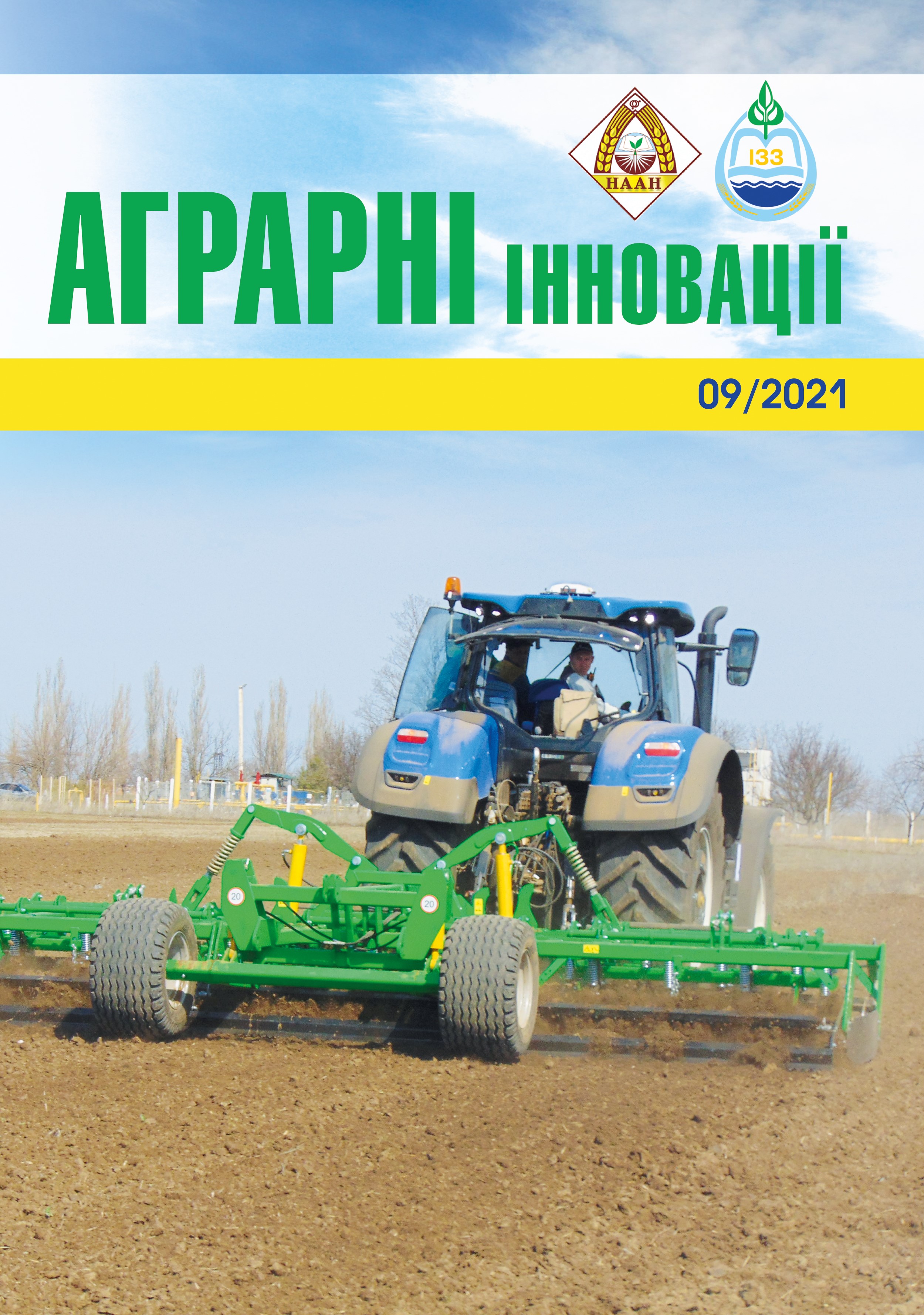Seed sowing rate as a factor in the formation of productive and economically valuable traits of multi-flowered sunflower hybrids by organic cultivation technology in the Southern Steppe
Abstract
The purpose of the study is to conduct a competitive test of modern hybrid composition of culture, its ecological and economic justification, as well as to establish the optimal seeding rate. The following elements of phenologicalbiometric and structural nature were studied: duration of vegetation period and separate interphase periods of culture, height of ornamental sunflower plants, survival of plants during vegetation, number of flowering baskets per plant, basket diameter, weight of petals from one inflorescence and one plant. The realization of this scientific goal was carried out by establishing and conducting a twofactor field experiment, in which factor A was a hybrid culture (Teddy F1, Double Sunking F1, Santa Fe F1), and factor B – seeding rate (50, 60 and 70 thousand pieces of similar seeds per 1 ha). The Tiddy F1 hybrid was significantly distinguished in the experiment. Santa Fe F1. The increase in seeding rate also led to a significant decrease in the diameter of inflorescences in all variants of culture hybrids: this figure in the hybrid Teddy F1 decreased from 11,7 to 6,3 cm with an average of 8,7 cm; Double Sunking F1 – from 8,4 to 5,5 cm (7,0 cm), respectively; Santa Fe F1 – from 9,3 to 6,0 cm (7,5 cm). The habit of individual inflorescences of the culture according to the variants of the experiment also determined the differentiated nature of such an indicator as the collection of air-dry petals from one basket. Teddy F1 hybrid was also the leader in this experiment: with an average value of 1,4 g, the productivity of one basket of hybrid decreased from 1,7 to 0,9 g with an increase in seeding rate from 50 to 70 thousand units / ha. The same dynamics was followed by us for other hybrids: Double Sunking F1 – 0,7 g (1–0,5 g); Santa Fe F1 – 0,8 g (1,0–0,6 g). Productivity of individual plants (mass of male petals in the air-dry state, collected from 1 plant) according to the factors of factor A was as follows: hybrid Teddy F1 provided a single plant, on average, 4,0 g of phyto raw materials; hybrid Double Sunking F1 – respectively 1,5 g, and hybrid Santa Fe F1 1,8 g. The most optimal sowing rate for all variants of hybrids is the rate of 50 thousand units / ha, at which the productivity of an individual plant was maximum and according to variants of factor A was, respectively, 5,1; 2,2 and 2,6 g of air-dry petals, which per unit of sown area is, respectively, 25,5; 11.0 and 13,0 kg / ha of phyto raw materials in the air-dry state.
References
2. Мельник А.В. Визначення оптимального об’єму живлення і складу ґрунтосумішей при вирощуванні горщикової культури декоративного соняшника. Збірник наукових праць Уманського державного аграрного університету. 2005. № 61. Т. 2. С. 559–563.
3. Методика проведення експертизи сортів соняшнику декоративного (Helianthus annuus L. ssp. ornamentalis) на відмінність, однорідність і стабільність URL: https://www.sops.gov.ua/uploads/page/5b9240b9a2095.pdf.
4. Першин А.Ф., Першина И.М. Генетический потенциал декоративного подсолнечника. Цветоводство сегодня и завтра: ассортимент, технологии, маркетинг : материалы III-й Международной конференции, г. Москва. Москва, 1998. С. 210–213.






